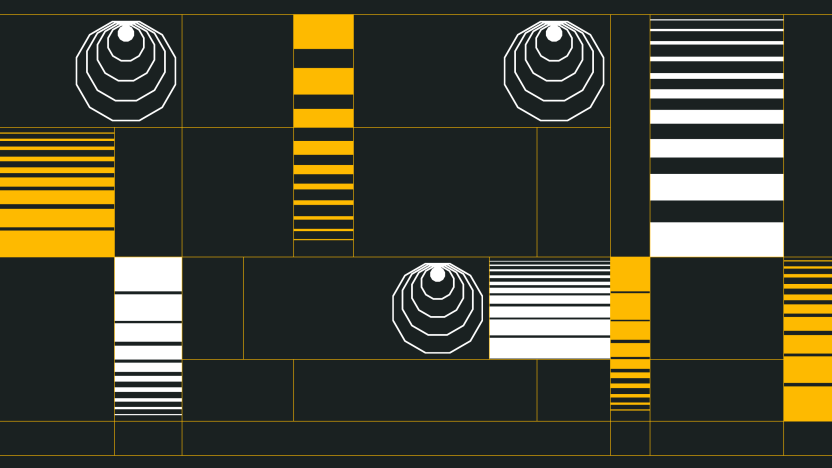Productivity before dawn
Morning routines have become more and more popular. How does productivity happen before the world wakes up?
by Ornella Sinigaglia

The paradox of our interconnected age is that we’re running out of time — not simply because we’re mortal, or because our perception of time changes as we grow. We are constantly trying to make time for more activities. Or, to make our time more productive. If taking a break and becoming mindful (which is, doing one thing at a time) isn’t an option, carving time out in our mornings is the ultimate solution to the struggle for more time. Even better: Deliberate mornings are an act of self-care. They can make us more focused. Ultimately, some might even say, they’re the key to a fulfilling and successful life.
In the last few years, morning routines have become more and more popular. The term ‘morning routine’ started gaining traction as a Google search in 2012, and it’s not a coincidence: In 2011, smartphone sales outnumbered those of regular cell phones. Once we started realizing the downside of being connected 24/7 was stretching our working hours beyond the usual 9-to-5 grind, so began the quest for a magic formula to bring time back into our hands. And we haven’t stopped looking for it: Google search data shows that 2019 was the year of morning routines, or at least, the year when morning routines were one of the most sought-after New Year’s resolutions, as that search peaked during the first week of January. The most obsessed are Australians, with the highest number of queries typed in Perth, Brisbane, Adelaide, Sydney, and Melbourne, followed by Canadians (Toronto), and U.S. citizens (Philadelphia, New York, and Los Angeles).
“Maybe we’re expecting too much out of time,” says Benjamin Spall, co-author with Michael Xander of My Morning Routine: How Successful People Start Every Day Inspired, a collection of over 60 morning routines that Spall and Xander initially collected for their website mymorningroutine.com. Spall read the book The Power of Habit by Charles Duhigg, and then he and Xander decided to start a website where they’d interview people about their different daily habits. Spall and Xander started with their friends and as their collection grew, so did the calibre of their interviewees, which now includes high-performers such as three-time Olympic gold medalist in swimming, Rebecca Soni; Ed Catmull, President of Pixar and Walt Disney Animation Studios; and Biz Stone, co-founder of Twitter and Medium. Some routines are spartan and strict, some are all about exercising, while others are more self-indulgent — yet none of them sound like a chore. Spall says of his routine: “I get up at 6:30, meditate for 10 minutes, then write for approximately 45 minutes. I have my breakfast, and then head to work. I always read on the subway, because in the evening I’m just too tired to read, so I bring reading into my morning routine that way.”
Do morning routines change our perception of time? Yes, Spall says: “I definitely feel that I have more time for myself. In those 45 minutes, I focus on writing. I don’t check my mail, don’t check my Twitter. It can be difficult, but I know that I won’t get this time again until the next day, so this really makes me feel that time is more precious and that I have to make the best use of it.”
So how can early rising become something that we enjoy doing, to the point where we can’t wait for that magic hour? Mark McLaughlin, neurosurgeon, keynote speaker, and author of the book Cognitive Dominance: A Brain Surgeon’s Quest to Outthink Fear, says if we are looking forward to our morning routine, then we won’t mind getting up early for it. He says: “There is this quote from Canadian psychologist Jordan Peterson that I really like: We grow in strength in proportion to our willingness to confront sequential challenges. If you’re really excited about what you’re going to do, even if it’s something really hard, you want to get up.” He says the battle to get up early to do what we love is about fear, rather than sleepiness: “Some people would say it’s not fear. Is it anxiety then? Is it uneasiness? Is it something causing you to avoid what you need to do? Staying in bed is an avoidance strategy. It’s the mental running away from something.” Doing what brings you joy first thing in the morning, well before distractions and interruptions start to creep in, can create a positive feedback loop where you no longer have that fear.
Are we naturally wired for early morning routines though? McLaughlin says, we are: “There’s good science proving that circadian rhythms are important to follow. Biologically, for thousands of years, we’ve functioned around the sun. And so it’s important to know that when you’re trying to break that system, you’re fighting Mother Nature, you’re fighting the encoding of your entire genetic system.” He says that the morning is the best time to get into the habit of a routine, and by building a routine we can create a positive feedback loop in our brains. While you could build the same type of routine in the evening, McLaughlin says: “We’ve been structured during thousands of years to have a morning routine.”
McLaughlin’s morning routine includes 10 minutes of meditation followed by filing and planning — what he calls a ‘triple threat.’ He started developing this structure 20 years ago, struck by what the president of the hospital where he worked said to him as he was starting his career: “The first hour in the morning is mine. I do whatever I want to do for myself in the morning. Some days it’s sleep, some days it’s read, but it’s absolutely mine. It’s non-negotiable.” Inspired by David Allan’s book Getting Things Done, McLaughlin started by creating files for each day of the month, and for each month of the year, plus an additional one called ‘someday, maybe.’ He says: “I’m constantly thinking of things that I want to do. So instead of carrying this big pile around with me, I just drop each task into one day of the month, and in the morning, when I look at my files, I just say ‘It doesn’t matter what you’ve got to do today, get that one thing done and then file.’ And that gives you the strength to grow. And you start getting that confidence. It works really, really well. Starting your day without a set plan is like running a race with no idea of the route or destination: you might get there eventually, but you’re going to be stressed, exhausted, and certainly lagging behind everyone else.”
Whether you follow Robin Sharma’s The 5 am Club method — waking up at 5 a.m. followed by 20 minutes of moving, 20 minutes of reflecting, and 20 minutes for personal growth — or if you are an early riser sticking to a self-care routine, you are not doing more — you are actually doing less. That’s the conclusion performance coach, and former Division I All American wrestler, Jim Harshaw, came to as he interviewed his guests for his podcast, Success Through Failure. When asked what’s the one habit that’s most responsible for their success, the answers he collected included journaling, meditating, praying, working with a coach, going on a retreat, and planning. None of these, points out Harshaw, are about ‘doing’ — they’re actually the opposite. Harshaw calls these moments productive pauses. Ancient Roman writers and philosophers like Horace, Seneca, and Ovid called this otium, an abstract term with a variety of meanings including contemplation, resting, and playing.

While technology wasn’t an intrusion in our lives then as much as it is today, the human fascination with quietness and reflection hasn’t changed. When you’re up early and all alone, your attention isn’t being fragmented, points out Sharma in The 5am Club. He writes: “And so the prefrontal cortex, that part of your brain responsible for rational thinking — as well as constant worrying — actually shuts off for a short time.” According to Sharma, getting to a flow state before the rest of the world wakes up requires a highly-structured discipline for the first hour of the day, including intense physical activity from 5 to 5:20 am, 20 minutes of journaling, meditation, planning, contemplation, or prayer; and 20 more of growth-centred activities like reading, reviewing goals, listening to a podcast, or studying.
Sharma’s focus on physical activity as the very first thing in the morning is backed by science: It has been proven that working out increases dopamine and serotonin levels and therefore reduces cortisol — the stress hormone — which is particularly high early in the morning as cortisol triggers the fight-or-flight mechanism, which cave people relied upon for survival.
Hitting the gym or stepping on the yoga mat first thing in the morning really gives you extra cognitive energy, confirms McLaughlin. “If you need to use your cognitive energy in the morning, you should work out in the morning before you use your cognitive energy. If you look at blood flow studies across the board, they show better blood flow to the brain, and also better metabolite distribution of the brain after you work out. And it makes sense: You process information better, your mind is more alert.”
Being an early bird and catching the worm shouldn’t come at the cost of less sleep though. Sharma recommends a specific night-before routine of doing less that bans technology from the last three hours of the day — unless you decide to listen to a podcast or an audiobook in your second to last hour before sleep. Media mogul Arianna Huffington, who had her wake-up call from overworking in 2007 and then founded a venture focused on helping people achieve work-life balance, Thrive Global, firmly believes that keeping cell phones away from the bedroom is key to unwinding and embracing a good night’s sleep. So much so that the last chapter of her best-selling book, The Sleep Revolution, is called “Putting technology in its place (not on your nightstand).” Most people bring their phones into the bedroom. With phones comes work stress, to-do lists, and the glare of constant notifications. And because rituals are crucial in learning and development, at some point her startup launched a (bulky) bed phone charging station conceived to keep phones away from the nightstand. “You put your phone under the blanket and you tuck it in and say goodnight,” she told CNBC Make It in 2017. “When you have a child, you [can] teach your child to put the phone in its bed.”
If contemporary writers, coaches, and productivity hack gurus can’t convince you, and you still believe that Aristotle wasn’t right when he recommended that “It is well to be up before daybreak, for such habits contribute to health, wealth, and wisdom,” don’t panic. Morning routines don’t have to be damn early morning ones. “There are many books, articles, and podcasts where people talk about these strict routines. And it’s great if that works for some people, but for most of us, it doesn’t really work that way,” says Spall. “I don’t do my morning routine every day. I try to, but sometimes I am tired and I need to sleep a little bit more. If you miss one day, try not to miss the following day. And start little. If you normally wake up at 7 am, aiming for 5 am will burn you out.” Whether it is meditating, working out, or something else, the point of embracing a morning routine is enjoying that time, not just always trying to get the most out of it.



 in Italy
in Italy